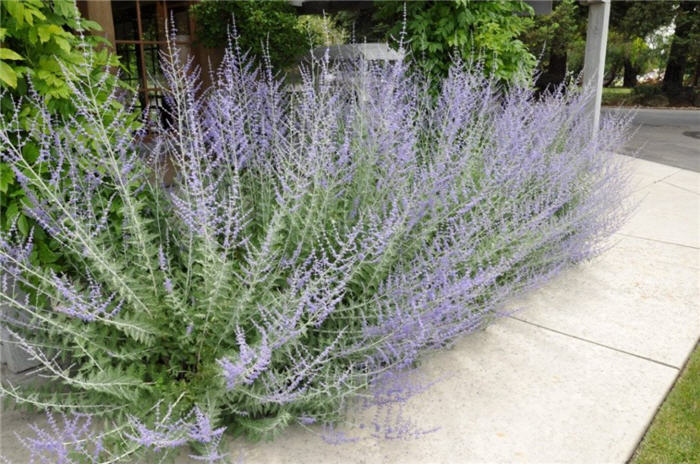| Botanical Name: Perovskia atriplicifolia | |
| Common Name: Russian Sage |

-
Anatomy
-
Culture
-
Design
Plant Type
Shrub, Perennial
Height Range
3-6'
Flower Color
Blue
Flower Season
Summer
Leaf Color
Grey Green
Bark Color
Brown
Fruit Color
n/a
Fruit Season
n/a
Sun
Full
Water
Low
Growth Rate
Moderate
Soil Type
Sandy, Loam, Rocky
Soil Condition
Average, Poor, Well-drained, Dry
Soil pH
Neutral
Adverse Factors
Invasive
Design Styles
Meadow, Mediterranean, Ranch
Accenting Features
Fragrance, Showy Flowers, Unusual Foliage
Seasonal Interest
Summer
Location Uses
Background, Perennial Border, Shrub Border, Foundation, Walls / Fences
Special Uses
Cut Flowers, Mass Planting
Attracts Wildlife
Hummingbirds, Butterflies
Information by: Stephanie Duer
Photographer: Susan Frommer/ Sanchez
Photographer: Susan Frommer/ Sanchez
-
Description
-
Notes
Russian sage may be the ubiquitous low-water garden plant. With its grey green, aromatic foliage, and azure blue spires, it provides a long-lasting show in hot, dry gardens. It grows to 3 to 5 feet tall, and nearly as wide. It is a woody perennial and forms a very hard trunk over time. It is both airy and substantial, and partners well with herbaceous perennials, woody shrubs, or ornamental grasses. It also would grow well against a south or west facing wall or fence.
Grow in full sun and well drained soil. Tolerates a wide range of soils including loamy-clays, poor soils, and sandy soils. Tolerates a lot of heat, including reflective heat. Over-watering will cause the plant to grow larger than is typical, to be a bit floppy, and to spread, sometimes with reckless abandon. Cut back hard in late winter to early spring (see Guides).